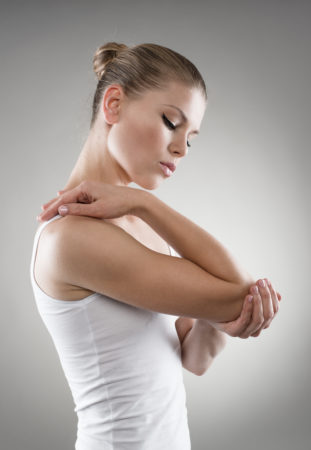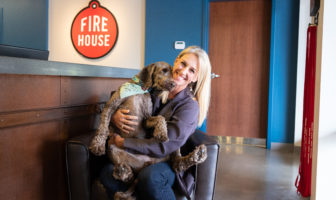Here’s how to know whether you may get osteoporosis.
By Lauryn Lax
 Osteoporosis is not just an “old-lady disease.” While osteoporosis is a disease most often associated with women older than age 50 due to the decline in estrogen, the bone-building hormone, younger women are not immune to the disease, particularly thinner females.
Osteoporosis is not just an “old-lady disease.” While osteoporosis is a disease most often associated with women older than age 50 due to the decline in estrogen, the bone-building hormone, younger women are not immune to the disease, particularly thinner females.
Our bones are in a constant state of renewal. New bone is made and old bone is broken down. When we’re kids and teens, our bodies make new bone faster than they break down old bone, and our bone mass increases a la the beauty that is growing pains. Most people reach their peak bone mass by their early 20s and, as people age, bone mass is lost faster than it’s created.
In regard to osteoporosis, this presentation is exaggerated as bone mass breaks down and density decreases. Osteoporosis is a condition that affects approximately one in two women. Moreover, 50 percent of these women will suffer from an osteoporosis-related fracture at some point in their lifetime, and another one in two women will experience decreased bone mass, known as osteopenia, before reaching osteoporosis.
As osteoporosis affects 80 percent more women than men, here’s how to know whether you’re being affected.
Diagnosis
Osteopenia is a precursor to osteoporosis, and both are diagnosed using bone-mineral-density scanning using a dual-energy X-ray absorptiometry, or DEXA, machine.
Risk factors
Women are at an increased risk for osteoporosis related to estrogen levels if they:
- have had their ovaries removed
- are going through menopause
- are of Caucasian ethnicity
- had their first period at a later age during puberty
- experience irregular periods or amenorrhea (an abnormal absence of menstruation)
- have a lower body weight
- have a highly active lifestyle or exercise excessively
- have a history of disordered eating
- have an overactive thyroid, known as hyperthyroidism
- have a health diagnosis of arthritis, carpal tunnel syndrome, low vitamin D status, autoimmune condition, gastroesophageal reflux disease or irritable bowel syndrome
- keep a vegetarian or vegan diet
- have low fat intake, particularly low intake of saturated fats and fat-soluble vitamins such as vitamins A, D, E and K
Common symptoms
Unlike a runny nose during a cold or experiencing joint pain with arthritis, osteoporosis symptoms are silent and often fly under the radar until a more serious injury, like a fracture or stress fracture, occurs.
Common symptoms to look out for that may suggest your likelihood of having the disease include:
- easily getting stress fractures, especially in the feet or hips
- shin splints
- back pain caused by an undiagnosed collapsed vertebra or fracture
- loss of height
- a stooped posture
- digestive distress (chronic bloating, constipation, IBS or GERD)



